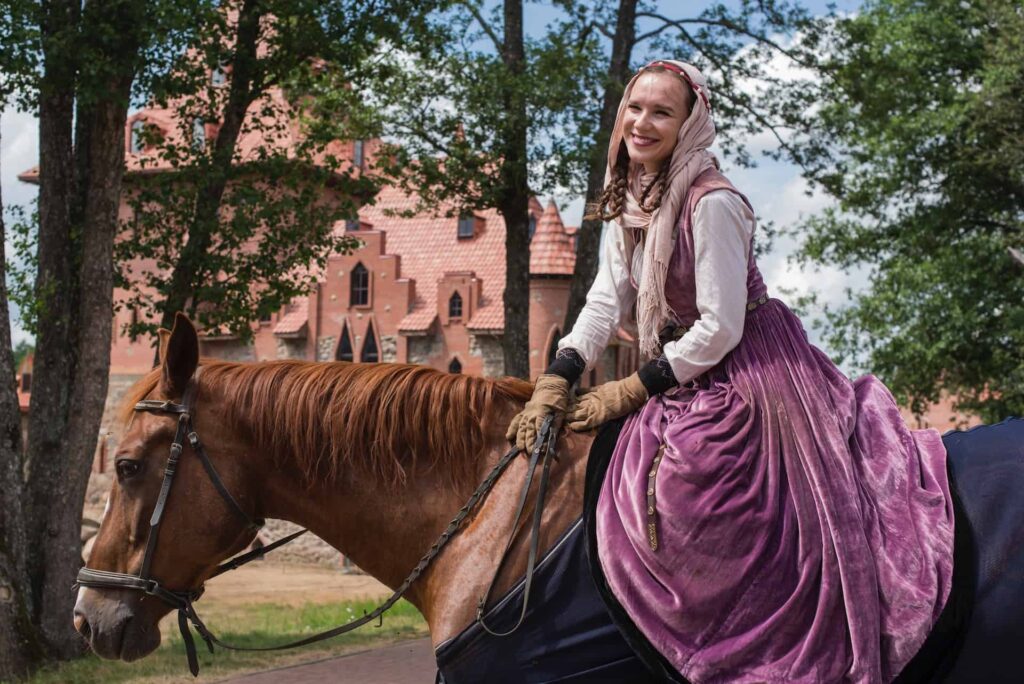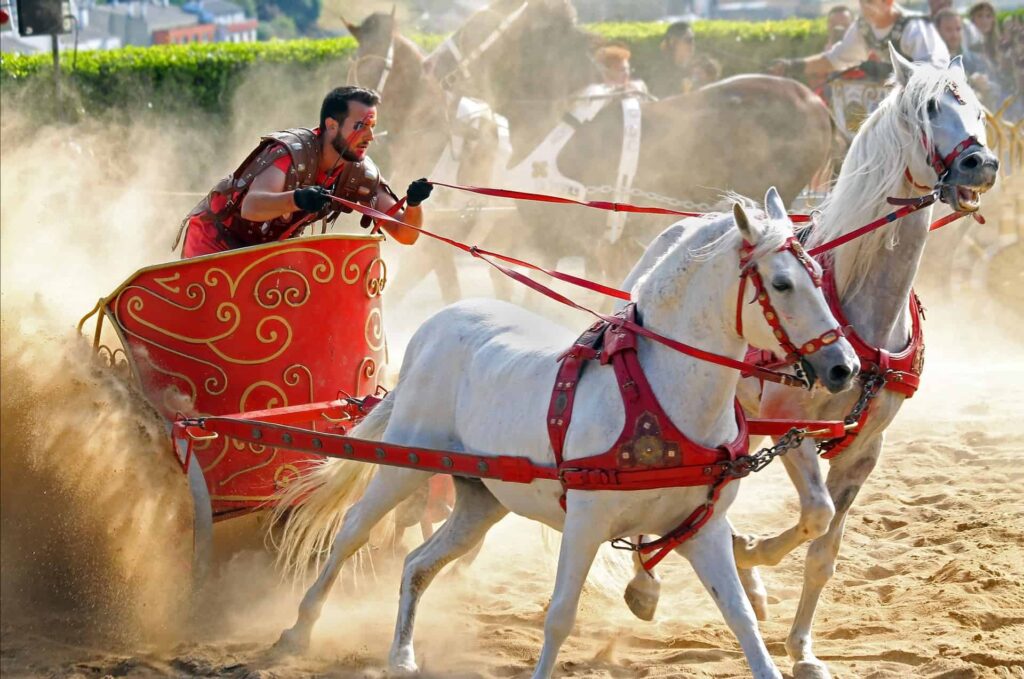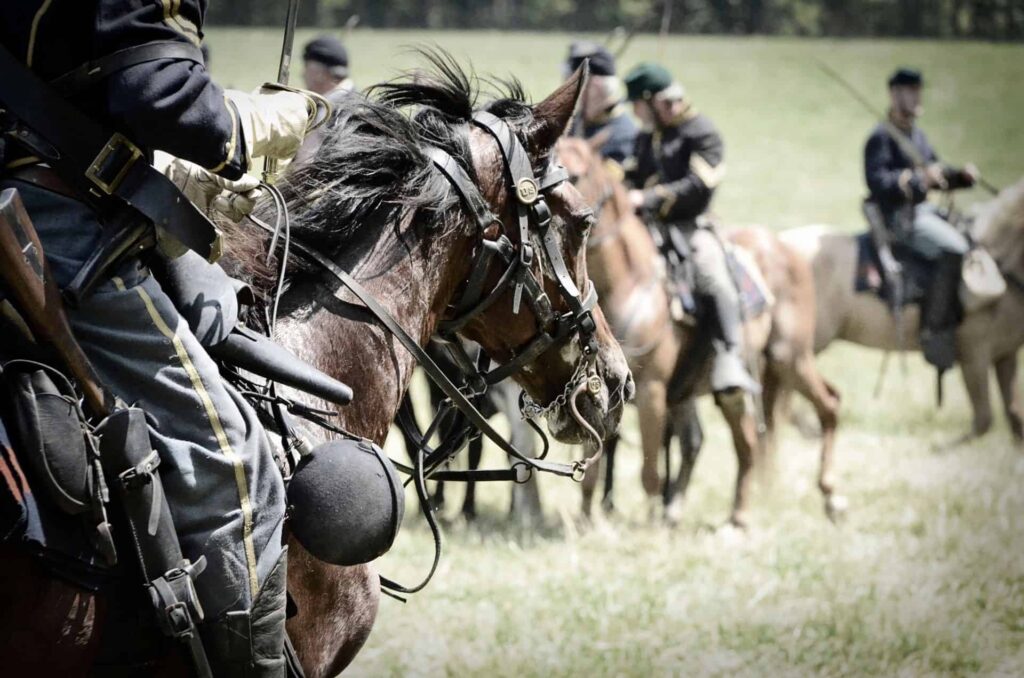During the Middle Ages, horses played a crucial role in warfare, transportation, agriculture, and as a symbol of social status. These magnificent creatures, while smaller and less diverse in breed compared to their modern counterparts, were highly valued for their stamina, agility, and strength. Specialized breeds were developed to suit various uses such as carrying knights into battle, plowing fields, or for recreational activities like hunting and jousting.
The physical characteristics of medieval horses varied depending on their specific role and the region in which they were found. However, they typically had a solid build and sturdy legs to withstand the harsh environments and the demands placed on them by their riders. Moreover, the breeding and care of horses during this time reflected the significance they held in medieval society, as detailed records were kept to ensure their well-being and maintain their bloodlines.
Throughout history, the medieval horse has remained an enduring symbol of the power and grace associated with this time period. Today, their influence can still be seen in various aspects of popular culture, from literature and film to art and historical reenactments.
Key Takeaways
- Medieval horses were essential for various aspects of society, including warfare, transportation, and agriculture
- Physical characteristics and specialized breeds were developed to suit a range of purposes and roles
- The legacy of medieval horses can still be seen in popular culture today, highlighting their lasting impact on society
Physical Characteristics of Medieval Horses
Size
Medieval horses were generally smaller compared to modern ones, with a majority of them being less than 14.2 hands (4 feet 10 inches) tall from the ground to their shoulder blades1. They were bred to suit the needs of society during the Middle Ages, which included war, agriculture, and transport, making their size appropriate for the tasks they were expected to perform.
Gait
The gait of medieval horses varied depending on their specific roles and the types of work they were involved in. However, due to their smaller size compared to today’s horses, it is likely that they had a smoother and more efficient gait, allowing them to carry riders and equipment over long distances with relative ease.
Back
The backs of medieval horses were shorter and stronger compared to their modern counterparts. This allowed them to support the weight of a rider, weapons, and armor without becoming fatigued. The shorter back may also have contributed to a more comfortable ride for their riders, especially during long journeys or strenuous activities like jousting and warfare.
Neck
The neck of a medieval horse was well-muscled and of moderate length, reflecting the requirements of their diverse roles within society. Horses that were utilized for war would need a strong neck to wield weapons, like lances or swords, while agricultural horses generally had a slightly longer neck to enable them to effectively graze and perform various tasks.
Historical Overview
Middle Ages
During the Middle Ages, horses were central to society, playing crucial roles in war, agriculture, and transport. They were smaller in size, build, and breed compared to their modern counterparts. The medieval horse was a valuable asset for the nobility and common folk alike, and keeping them in prime condition was essential for both the economy and daily life.
The importance of these animals is evident in the fact that all medieval English kings had their own stables. Their horses could be used by their immediate household and, of course, by the kings themselves.
Roman to Norman Period
As society transitioned from the Roman period to the Norman period, horses continued to be indispensable in various aspects of life. Horses played a significant role in warfare; however, the common depiction of the European knight charging into battle is not entirely accurate. Heavy cavalry charges were rare, and most offensive warfare in the early Middle Ages involved sieges, or mounted raids known as chevauchées. These chevauchées would involve warriors lightly armed on swift horses.
Several factors contributed to the changes in horse breeds and usage during this time. Advancements in technology and the development of new agricultural techniques helped improve horse breeding and care. The cultural exchanges between different European societies also played a role in shaping the breeding and utilization of horses between the Roman and Norman periods.
In conclusion, horses were indispensable throughout the Middle Ages, serving crucial roles in both society and the economy. Their use in warfare, agriculture, and transport highlights just how important these animals were, and their roles evolved alongside changes in technology and advances in horse breeding and management during the transition from the Roman to Norman periods.

Role in Warfare
Battles
In medieval times, the warhorse played a crucial role in warfare. These horses were trained to withstand the chaos of battle, carrying armored knights into combat. Warhorses allowed knights to utilize their weapons such as lances, swords, and maces with greater efficiency. The mounted knight was only as effective as his warhorse since they functioned as an extension of the knight himself. Cavalry units were used to charge into enemy lines and break through their formations, causing significant disruption and chaos in the opposing forces.
Tournaments
In addition to their role in battles, warhorses were also used in tournaments. These events served as an opportunity for knights to display their horsemanship and combat skills, enhancing their reputation and status. Tournaments often involved jousting, which required the warhorse to maintain a straight and steady course as the knight attempted to strike his opponent with a lance.
Mobility and Shock Value
One of the most significant advantages warhorses provided was mobility on the battlefield. They allowed knights to move swiftly, outflank their opponents, and quickly respond to changes in the tactical situation. The sheer speed of a warhorse in full gallop added to its shock value, which was further enhanced by the knight and his heavy armor. This combination of speed and power often struck fear in the hearts of infantry and could potentially cause entire enemy units to be routed. Moreover, warhorses were also used to pull heavy siege weapons such as trebuchets and battering rams, providing vital support during sieges.
Weapon of War
A well-trained medieval warhorse could also be considered a weapon of war itself. Its powerful stature and ability to withstand the noise and chaos of battle made it a formidable force on the battlefield. The warhorse’s role was not limited to just carrying the knight but also actively participating in combat, sometimes using its hooves to trample enemies or un-horse rival knights. This made the knight and warhorse a combined weapon, employing their mobility, strength, and skill to deliver devastating blows to enemy forces.
Notable Breeds
Destriers
Destriers were the highly prized war horses of the Middle Ages, known for their strength, power, and agility. These horses were most commonly associated with knights and used in tournaments as well as battles. The breed was a combination of several medieval warhorse breeds such as the Friesian, Andalusian, Arabian, and Percheron.
Great Horses
Great Horses, also known as heavy warhorses, were used by knights during medieval times for their strength and ability to carry heavy armor. Often referred to as chargers, these large and powerful horses were the backbone of the medieval cavalry. Breeds like the Percheron were ideal choices for Great Horses due to their size and ability to bear the weight of a fully armored knight.
Rounceys
Rounceys were versatile and all-purpose horses, used for various tasks during the Middle Ages. They were often utilized for light cavalry, scouting, and traveling. Rounceys were smaller and less powerful than destriers and Great Horses, but their agility and endurance made them valuable assets in warfare and daily life. The Mongolian Horse is an example of a breed that could have been used as a rouncey.
Palfreys
Palfreys were the preferred choice for nobles and high-ranking individuals during the Middle Ages when traveling for long distances. These horses were light-riding animals, known for their smooth gaits and comfortable ride. Their elegant appearance and graceful movements made them popular among the aristocracy. The Andalusian horse breed is a prime example of a palfrey, prized for its beauty and responsive temperament.
Horse Equipment
Horse Armour
Horse armor was primarily reserved for the elite heavy cavalry and used predominantly in battles. Materials such as metal, leather, and textiles were employed to create protective gear for the horses. The development of horse armor generally paralleled that of armor for humans, with similar decorative techniques. For more details, see the Metropolitan Museum of Art’s page on horse armor.
Saddles
During the Middle Ages, saddles played an essential role in horse riding. They provided support, balance, and comfort for the rider. Different designs of saddles were used depending on the specific use, such as for leisure, travel, or combat purposes. Materials used for constructing saddles included wood, leather, and textile padding. For more information on medieval saddles, check the Medieval Horse and its Equipment book.
Stirrups
Stirrups were important for riders in providing stability and control on horseback. They enabled riders to mount and dismount easily while also allowing better maneuverability during battle. Stirrups were typically made from metal or wood and attached to the saddle on both sides. They varied in design depending on the culture and period.
Spurs
Spurs were used by riders to communicate with their horses and provide gentle encouragement or direction. During the Middle Ages, spurs became more elaborate and decorative, often reflecting the rider’s status. Spurs were usually made from metals such as iron, brass, or silver. They were attached to the rider’s boots or shoes and could be round, blunt, or pointed.
Horseshoes
Horseshoes were essential in protecting the horse’s hooves, particularly for horses that needed to travel long distances or carry heavy loads. Horseshoes were typically made from metal, such as iron, and were secured to the hooves using nails. They were designed to help keep the horse’s feet from wearing out and provide traction on various terrains during the Middle Ages.
Breeding and Care
Breeding horses in the Middle Ages was a highly important task, as equines played a crucial role in warfare, transportation, and agriculture. Different breeds were developed to suit various needs and purposes. For instance, smaller breeds like the stocky pony were preferred for general riding and lighter work, while larger and more powerful breeds like the Shire were developed for heavier tasks such as pulling plows and carrying armored knights into battle.
One of the significant factors in breeding medieval horses was to develop specific traits that were in high demand during that time. The medieval warhorse, for example, is considered an extinct breed today, as breeding priorities have shifted in response to the changing roles of horses throughout history.
The care of horses was also critical during the medieval era. Grooming and maintaining the health of these animals directly impacted their ability to perform in various roles, be it in warfare or agriculture. As a result, all medieval English kings had their own stables to provide optimal conditions for their horses. This included appropriate housing, feeding, and regular grooming.
Proper nutrition was imperative for the horses to maintain their strength and stamina. Horses were generally fed a diet of hay, oats, and sometimes beans or peas. Providing horses with fresh water daily was also crucial for hydration and maintaining overall health.
The breeding and care of horses in the Middle Ages were pivotal to the growth of kingdoms and the success of their armies. Breeding efforts focused on developing horses with specific traits to serve various purposes, while stable management and proper nutrition ensured the health and longevity of these valuable animals.
Medieval Horses in Popular Culture
Medieval horses have long been a subject of fascination and intrigue in popular culture. They are often depicted as mighty, powerful creatures ridden by valiant knights clad in shining armor. These depictions can be found in a variety of mediums, including film, literature, and art, as well as in the architecture and structures of medieval castles.
In film, medieval horses frequently appear as the gallant steeds of heroic knights, from Hollywood blockbusters like Braveheart and Kingdom of Heaven to adaptations of historical legends such as King Arthur. These movies often showcase the symbiotic relationship between the rider and their horse, highlighting their loyalty and trust in one another.
One of the most iconic portrayals of medieval horses in popular culture, however, can be found in J.R.R. Tolkien’s The Lord of the Rings series. Through the mystical land of Middle-earth, these mythical creatures, known as the Mearas, serve as loyal companions to the characters, playing an essential role in epic battles and quests throughout the narrative.
While these representations often emphasize the grandeur and majesty of medieval horses, it is important to remember that historical research suggests these animals were more modest in size compared to their modern counterparts. In fact, studies have found that medieval warhorses were no bigger than modern-day ponies.
Nonetheless, the symbolism and allure of the medieval horse remain an essential aspect of popular culture, inspiring filmmakers, writers, and artists to continue bringing these magnificent animals to life. As a result, their mystique transcends time, appealing to the imaginations of audiences from all walks of life.

Medieval Horses – Final Thoughts
In medieval times, horses played a significant role in society as they were essential for transportation, agriculture, and warfare. The breeds and characteristics of horses during this period were quite different from those found today, with medieval horses generally being smaller in size and build.
Medieval art often depicted horses, revealing the integral role they played during this time. For example, the Bayeux Tapestry, a famous piece of medieval art, features numerous horses, illustrating their importance in warfare and daily life.
In the context of warfare, Bucephalus, the renowned horse of Alexander the Great, exemplifies the powerful connection between a rider and his horse. This strong bond was crucial to the success of various military tactics and allowed soldiers to effectively maneuver on the battlefield.
Throughout the Middle Ages, horses were also regarded as a status symbol, with royal families and noble households often owning and maintaining stables of high-quality horses. These well-bred animals were carefully maintained as they were vital to the economy and daily life during this period.
The significance of horses in the Middle Ages is apparent through their representations in medieval art, historical accounts, and tales such as those featuring Bucephalus and Alexander the Great. These versatile animals contributed substantially to medieval society as they provided essential support in agriculture, transportation, and warfare.
Related: Horse Warfare
Frequently Asked Questions
What size were medieval war horses?
Medieval war horses were generally larger and stronger than other horses of the time. They needed to be big enough to carry a fully armored knight and their own armor. However, they were not as large as modern draft horses, averaging around 15 to 16 hands high (about 60 to 64 inches at the shoulder).
How was horse armor used in the Middle Ages?
Horse armor, called barding, was designed to protect the essential areas of a warhorse during battle. Barding typically covered the horse’s neck, chest, flanks, and sometimes the head. The armor could be made of materials such as leather, padded cloth, or even metal plates, depending on the time period, region, and available resources.
What is the role of Palfrey and Destrier breeds?
Palfrey and Destrier were two types of horses used by knights and nobility in the Middle Ages. The Palfrey was a lighter, more versatile horse, suitable for riding, hunting, and travel. In contrast, the Destrier was a larger, more powerful warhorse specifically bred for battle and tournaments, capable of carrying its rider and heavy armor.
How were horses treated during medieval times?
The treatment of horses during the Middle Ages varied depending on their purpose and the owner’s status. High-value warhorses and noble steeds were well cared for, with attention given to their feeding, grooming, and training. However, average working horses likely faced harsher conditions, long hours of labor, and minimal care.
Which breed of horse did knights ride?
Knights rode various breeds of horses depending on the region and the specific needs of the knight. Some of the most common breeds used by knights were Friesians, Percherons, Andalusians, and Arabians. Differences in size, strength, and temperament determined the specific role each breed might have played in battle or everyday life.
What is the significance of horse drawings in medieval art?
Horse drawings in medieval art held great symbolic and cultural significance. Horses were often depicted as symbols of strength, nobility, and loyalty, reflecting their essential role in warfare, transportation, and everyday life. In many cases, the depiction of a horse in artwork indicated the social status, power, and wealth of its rider.
Last Updated on October 9, 2023 by Nate Dewsbury



